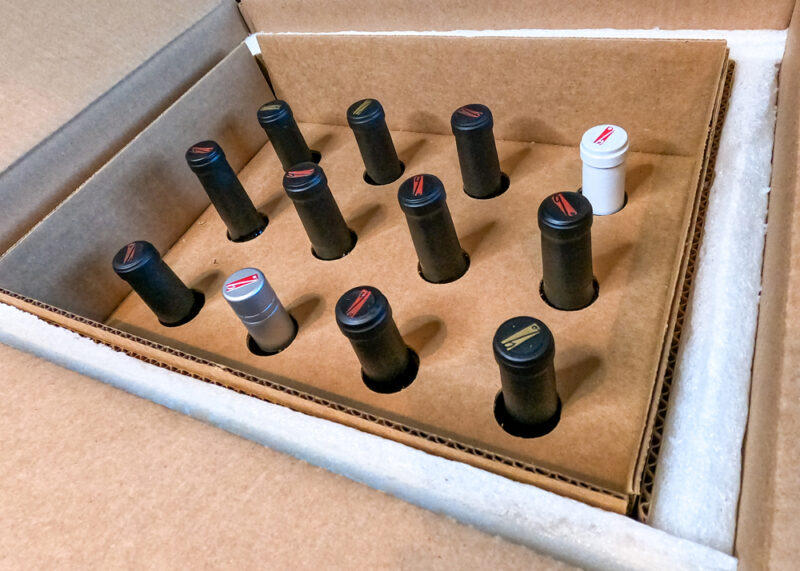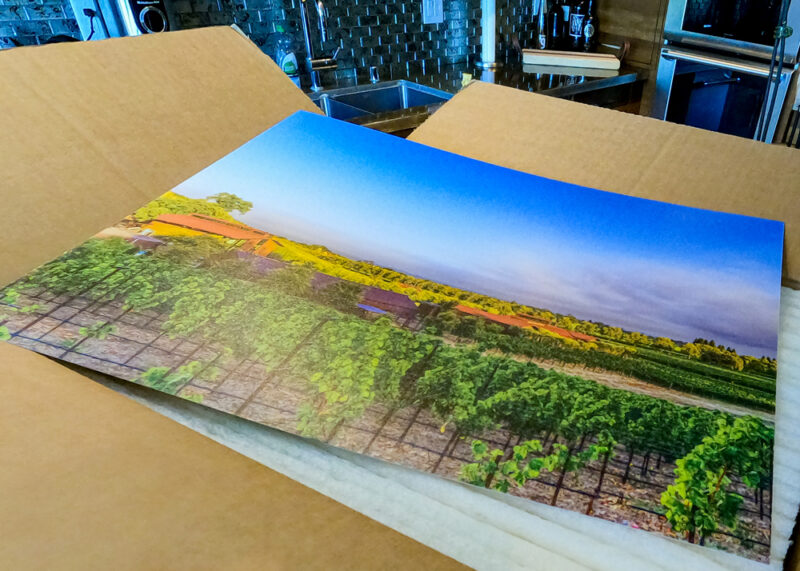B Cellars Sustainability
Our Oakville winery estate has been meticulously designed with conservation, sustainability, and land stewardship driving each and every decision. Our sustainability strategies extend beyond the physical attributes contained within our buildings and farming practices. They encompass an operating philosophy that bonds all of us to be mindful of the environmental impact we make in the pursuit of being the best craft wine and food experience in Napa Valley.
Packaging and Materials
Shipping Packaging
We ship all wines directly from the winery, allowing us a greater ability to ensure wine quality to your doorstep. Beginning on August 30, 2021, all of our wine shipping materials are 100% compostable, recyclable, and reusable. We are proud to feature GreenCell Foam, a BPI-certified compostable insulation made from renewable, U.S. grown corn. This change will remove over 30,000 cubic feet and over 15,000 pounds of styrofoam per year from landfills and commercial waste facilities. This change represents our commitment to our customers, our communities, and our global environment.
Paper Goods
Paper usage has been highlighted as a goal for improvement. One of our first steps is to move from inserting packets of paper with tasting sheets and recipes and other information into B Society shipments. We now insert a single piece of card stock with various “QR codes” linking pages on our website which contain all of this information and more.
Packaging and Materials
Shipping Packaging
We ship all wines directly from the winery, allowing us a greater ability to ensure wine quality to your doorstep. Beginning on August 30, 2021, all of our wine shipping materials are 100% compostable, recyclable, and reusable. We are proud to feature GreenCell Foam, a BPI-certified compostable insulation made from renewable, U.S. grown corn. This change will remove over 30,000 cubic feet and over 15,000 pounds of styrofoam per year from landfills and commercial waste facilities. This change represents our commitment to our customers, our communities, and our global environment.
Paper Goods
Paper usage has been highlighted as a goal for improvement. One of our first steps is to move from inserting packets of paper with tasting sheets and recipes and other information into B Society shipments. We now insert a single piece of card stock with various “QR codes” linking pages on our website which contain all of this information and more.
Water Conservation
Reclamation & Treatment
Vital to our sustainability efforts, water conservation is a daily priority. B Cellars employs state-of-the-art technology to manage wastewater, making it safe for our environment. By example, the Lyve System is an on-site biological wastewater plant with a net-zero ecological bi-product that repurposes water that has been used in the production of wine. Treated water is then held in large underground storage tanks and used for irrigation on the property.
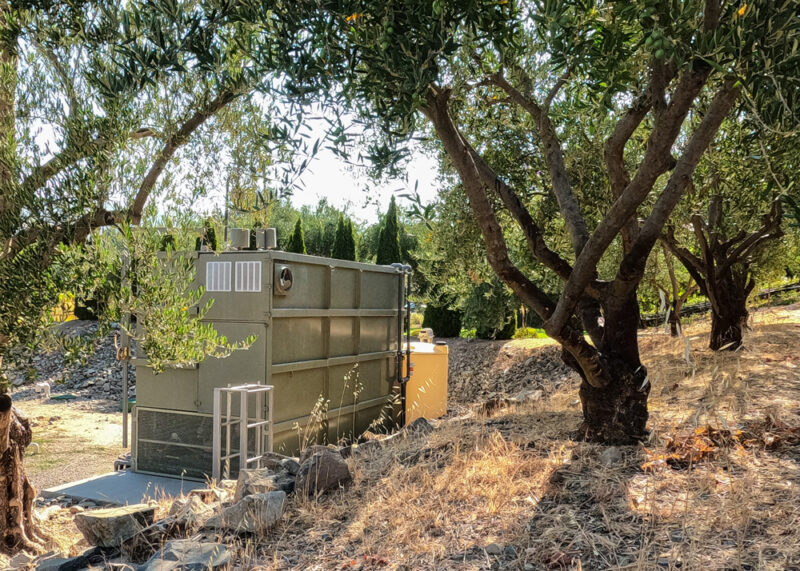
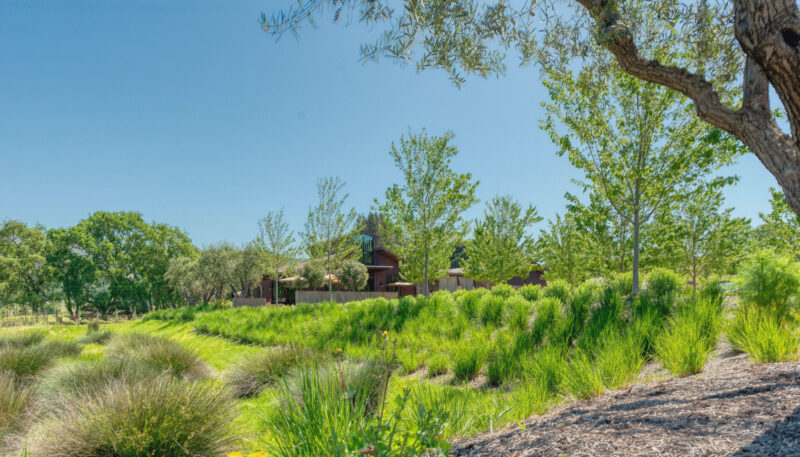
Watershed Protection
Rain water runoff from building structures and hardscape is collected and diverted into a detention pond area just to the north of our Hospitality House. From there, the water flows into the natural watershed and eventually into the Napa River and the San Pablo Bay. A specially engineered valve controls this runoff so that it matches the historical flow rates of this land and its drainage, thus preventing excess erosion downstream.
Water Conservation
Reclamation & Treatment
Vital to our sustainability efforts, water conservation is a daily priority. B Cellars employs state-of-the-art technology to manage wastewater, making it safe for our environment. By example, the Lyve System is an on-site biological wastewater plant with a net-zero ecological bi-product that repurposes water that has been used in the production of wine. Treated water is then held in large underground storage tanks and used for irrigation on the property.

Watershed Protection
Rain water runoff from building structures and hardscape is collected and diverted into a detention pond area just to the north of our Hospitality House. From there, the water flows into the natural watershed and eventually into the Napa River and the San Pablo Bay. A specially engineered valve controls this runoff so that it matches the historical flow rates of this land and its drainage, thus preventing excess erosion downstream.

Buildings & Energy
Natural American Clay
The finishes for the walls and ceilings of the private tasting rooms located in the Hospitality House are covered with American Clay. Clay plasters help regulate humid air inside buildings by absorbing and releasing moisture naturally — responding to changes in the interior space. Warm to the touch in winter and cool to the touch in summer, this approach brings healthier comfort to interior spaces. American Clay buffers humidity/moisture, has Zero-VOC (Volatile Organic Compounds), is non-toxic, resists mold, and helps create a calming environment. Made only in the USA (New Mexico), American Clay is green, sustainable, and allows for LEED accreditation and carbon credits.
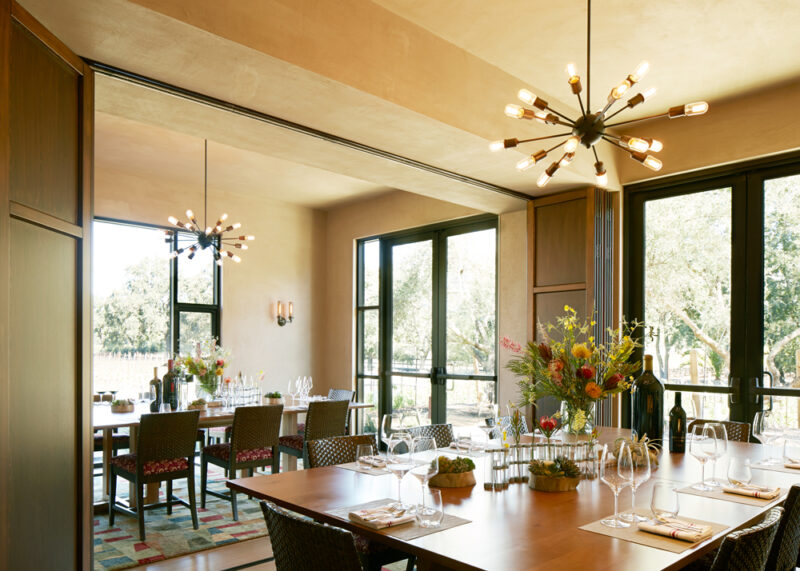
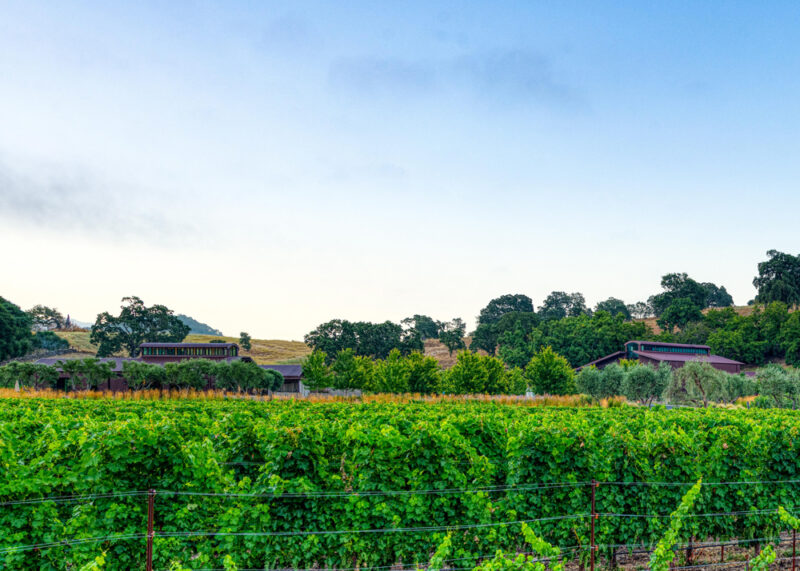
Natural Aesthetics
The state-of-art winery buildings (Vineyard Maintenance, Hospitality House and Winery Production) are modeled after barns reminiscent of the site’s ranching legacy. Simple materials were used such as recyclable corrugated steel and board-form concrete to complement the surrounding vineyards and native landscape.
Energy Conservation
The cupola system in Production is engineered to pull in “night-air” once the outside temperature hits the optimal low.
Interior and exterior light systems were a critical part of the design resulting in a functional system that meets and in many instances exceeds California Title 24/CAL Green standards. LED bulbs combined with motion sensors and automatic, timer-controlled shutoff systems minimize unnecessary energy use.
Concrete flooring in the Hospitality House and Production building provides critical thermal mass during winter months and conversely by their nature, remain cool to the touch during the warmer seasons.
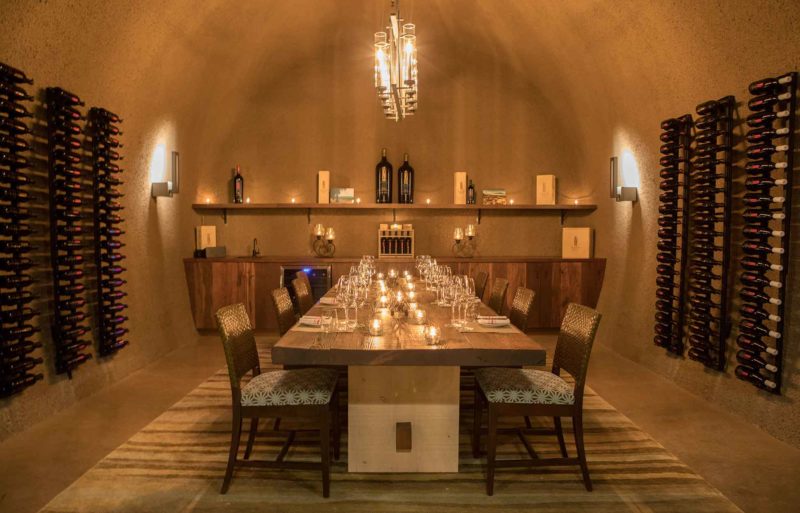
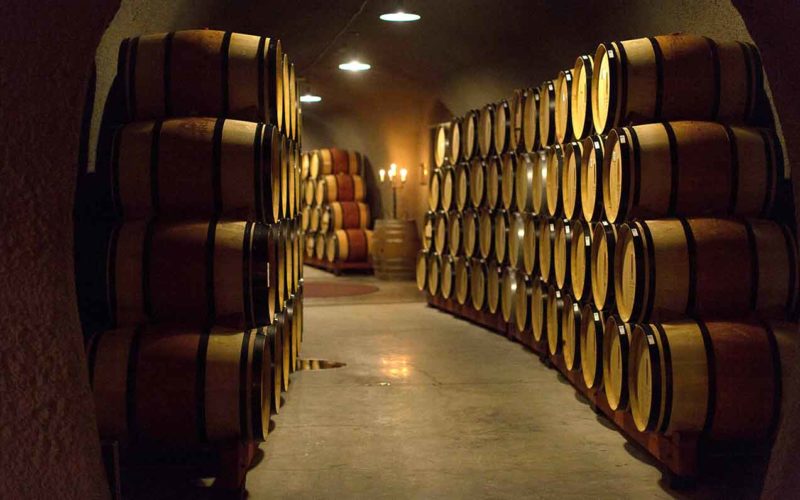
Cave Network
Perhaps the most dramatic feature of the estate is the 15,000 square feet of underground caves. Not only functionally beautiful, the caves significantly reduce the energy consumption associated with aging wine. Consistent, cool temperatures all year long eliminate any need for artificial cooling methods. The natural, high humidity levels inherent to caves dramatically improves the yields per barrel due to decreases in evaporation.
Buildings & Energy
Natural American Clay
The finishes for the walls and ceilings of the private tasting rooms located in the Hospitality House are covered with American Clay. Clay plasters help regulate humid air inside buildings by absorbing and releasing moisture naturally — responding to changes in the interior space. Warm to the touch in winter and cool to the touch in summer, this approach brings healthier comfort to interior spaces. American Clay buffers humidity/moisture, has Zero-VOC (Volatile Organic Compounds), is non-toxic, resists mold, and helps create a calming environment. Made only in the USA (New Mexico), American Clay is green, sustainable, and allows for LEED accreditation and carbon credits.

Natural Aesthetics
The state-of-art winery buildings (Vineyard Maintenance, Hospitality House and Winery Production) are modeled after barns reminiscent of the site’s ranching legacy. Simple materials were used such as recyclable corrugated steel and board-form concrete to complement the surrounding vineyards and native landscape.

Energy Conservation
The cupola system in Production is engineered to pull in “night-air” once the outside temperature hits the optimal low.
Interior and exterior light systems were a critical part of the design resulting in a functional system that meets and in many instances exceeds California Title 24/CAL Green standards. LED bulbs combined with motion sensors and automatic, timer-controlled shutoff systems minimize unnecessary energy use.
Concrete flooring in the Hospitality House and Production building provides critical thermal mass during winter months and conversely by their nature, remain cool to the touch during the warmer seasons.

Cave Network
Perhaps the most dramatic feature of the estate is the 15,000 square feet of underground caves. Not only functionally beautiful, the caves significantly reduce the energy consumption associated with aging wine. Consistent, cool temperatures all year long eliminate any need for artificial cooling methods. The natural, high humidity levels inherent to caves dramatically improves the yields per barrel due to decreases in evaporation.

Ecology & Stewardship
Deliberate Landscaping
Landscape relies on combinations of drought-tolerant and native tree species that provide shade, protect from wind, and create a more comfortable microclimate. Flowering ornamentals and orchard trees, as well as an understory of native flowers, shrubs, and herbs, facilitate pollination of the adjacent vineyards while contributing to the cultivated yet working agricultural quality. Larger, open areas are hydroseeded with a variety of native grasses and wildflower mixes to alleviate need for irrigation, secure slopes, provide a natural, native animal habitat for the many species that we share the property with.

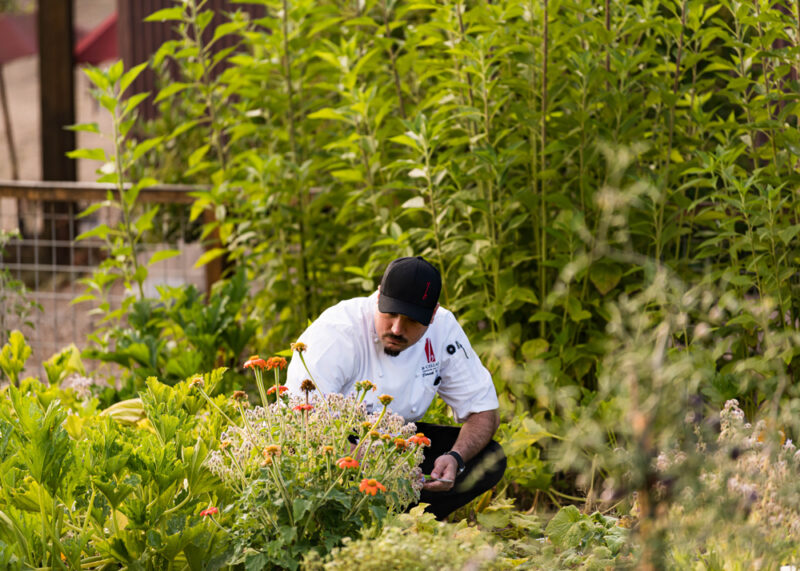
Culinary Gardens
Culinary gardens add to commitment to maximizing our agricultural usage of the land. Our signature wine and food pairings utilize food mostly grown on site in the gardens. We also gather food from the stone fruit orchards, herb beds, and edible flowers planted throughout the property. Over 70 mature olive trees line the front of the property and driveway and are the source for our estate olive oil program.
Symbiosis
Two bee apiaries on the property contribute to the health of the vineyards and strengthen the local bee community. To help encourage strong bee populations many of the plants featured in our landscaping were intentionally chosen because of their pollinator-friendly blooms. Just behind the barn and culinary gardens is where you can find our hen house. Currently featuring 4 species, our hens produce eggs for homemade breads, crackers, pasta, and other culinary needs. They also happily eat any garden scraps or leftovers, minimizing waste from the kitchen.
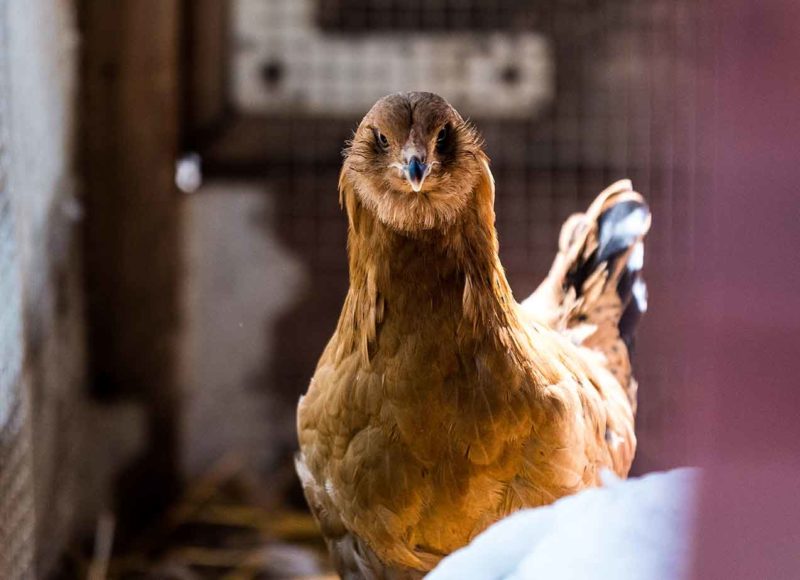
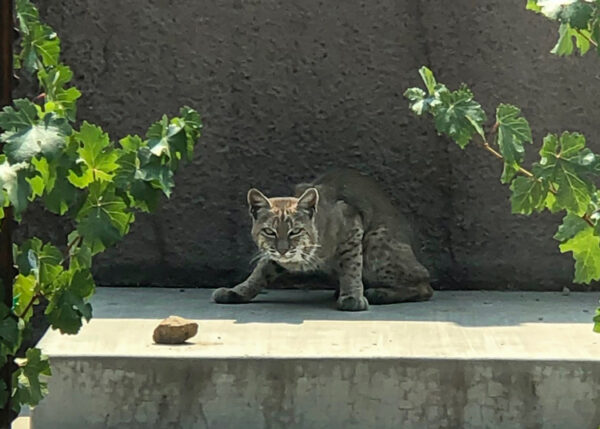
Sharing the Land
As stewards of this land, we take care to share the property in a way that minimizes our impact on native species. Squirrels, rabbits, foxes, coyotes, and even bobcats have all been seen on the property. Raptor boxes can be seen in the vineyards, providing safe homes to birds of prey like hawks and owls. Recently, a flock of turkeys adopted us and can be seen lolling through the vineyards at dawn and dusk. We even have a healthy reptile population including lizards and snakes.
Ecology & Stewardship
Deliberate Landscaping
Landscape relies on combinations of drought-tolerant and native tree species that provide shade, protect from wind, and create a more comfortable microclimate. Flowering ornamentals and orchard trees, as well as an understory of native flowers, shrubs, and herbs, facilitate pollination of the adjacent vineyards while contributing to the cultivated yet working agricultural quality. Larger, open areas are hydroseeded with a variety of native grasses and wildflower mixes to alleviate need for irrigation, secure slopes, provide a natural, native animal habitat for the many species that we share the property with.

Culinary Gardens
Culinary gardens add to commitment to maximizing our agricultural usage of the land. Our signature wine and food pairings utilize food mostly grown on site in the gardens. We also gather food from the stone fruit orchards, herb beds, and edible flowers planted throughout the property. Over 70 mature olive trees line the front of the property and driveway and are the source for our estate olive oil program.

Symbiosis
Two bee apiaries on the property contribute to the health of the vineyards and strengthen the local bee community. To help encourage strong bee populations many of the plants featured in our landscaping were intentionally chosen because of their pollinator-friendly blooms. Just behind the barn and culinary gardens is where you can find our hen house. Currently featuring 4 species, our hens produce eggs for homemade breads, crackers, pasta, and other culinary needs. They also happily eat any garden scraps or leftovers, minimizing waste from the kitchen.

Sharing the Land
As stewards of this land, we take care to share the property in a way that minimizes our impact on native species. Squirrels, rabbits, foxes, coyotes, and even bobcats have all been seen on the property. Raptor boxes can be seen in the vineyards, providing safe homes to birds of prey like hawks and owls. Recently, a flock of turkeys adopted us and can be seen lolling through the vineyards at dawn and dusk. We even have a healthy reptile population including lizards and snakes.

Culture & Community
We began with a vision to change the way visitors to the Napa Valley interact with wineries. This focus on making a connection with our guests led us naturally to thoughtfully consider the ways in which every aspect of this property is connected. This in turn led us to consider the ways that our property would also interact with our neighbors and our employees, as well as with our guests.
The thoughtful and deliberate consideration of the interconnectedness of each piece of this property lent itself naturally to considerations of how best to build sustainability into our plans and decisions. Each element of the property is integrated with more than 70% of our land committed to vineyards, the Chef’s culinary garden, henhouse, and apiaries. The remainder of the land provides a continuous awareness of the production process involved in crafting fine wine and the farm-to-table food products that guests enjoy during their visit to B Cellars.
In addition to some of the physical aspects of our business, described above, we also considered how B Cellars might fit into our Oakville neighborhood and into the greater Napa Valley. By way of example, we supply “family meal” lunches to our employees as a way to encourage them to stay on-site during their breaks and to limit additional traffic on our country roads. Likewise, we provide incentive dollars to employees who share rides or utilize public transit for their commute.
Curious to Know More
If you are curious to have a conversation about B Cellars' sustainability, we would be happy to talk with you more. Please contact:
Curtis Strohl
General Manager
(707) 253-2850
